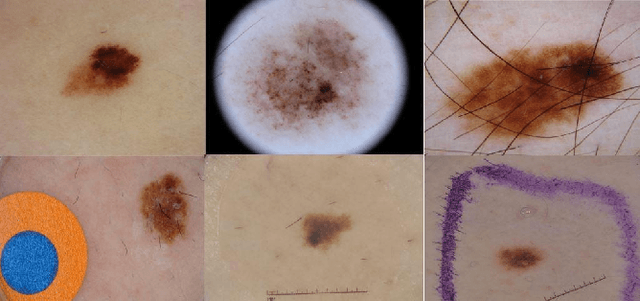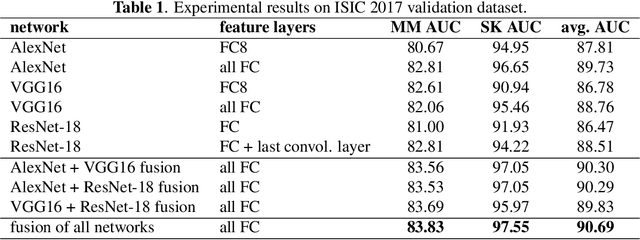Skin Lesion Classification Using Hybrid Deep Neural Networks
Paper and Code
Feb 27, 2017



Skin cancer is one of the major types of cancers and its incidence has been increasing over the past decades. Skin lesions can arise from various dermatologic disorders and can be classified to various types according to their texture, structure, color and other morphological features. The accuracy of diagnosis of skin lesions, specifically the discrimination of benign and malignant lesions, is paramount to ensure appropriate patient treatment. Machine learning-based classification approaches are among popular automatic methods for skin lesion classification. While there are many existing methods, convolutional neural networks (CNN) have shown to be superior over other classical machine learning methods for object detection and classification tasks. In this work, a fully automatic computerized method is proposed, which employs well established pre-trained convolutional neural networks and ensembles learning to classify skin lesions. We trained the networks using 2000 skin lesion images available from the ISIC 2017 challenge, which has three main categories and includes 374 melanoma, 254 seborrheic keratosis and 1372 benign nevi images. The trained classifier was then tested on 150 unlabeled images. The results, evaluated by the challenge organizer and based on the area under the receiver operating characteristic curve (AUC), were 84.8% and 93.6% for Melanoma and seborrheic keratosis binary classification problem, respectively. The proposed method achieved competitive results to experienced dermatologist. Further improvement and optimization of the proposed method with a larger training dataset could lead to a more precise, reliable and robust method for skin lesion classification.
 Add to Chrome
Add to Chrome Add to Firefox
Add to Firefox Add to Edge
Add to Edge